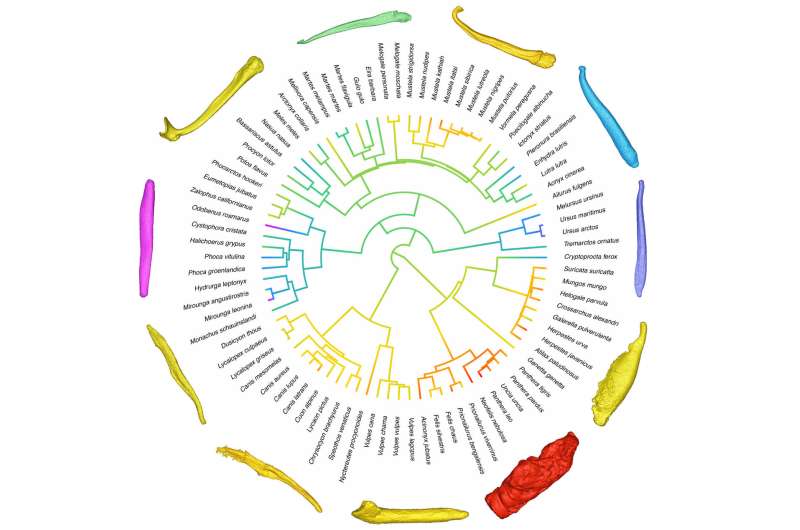October 19, 2020 report
Baculum study suggests its complexity is related to monogamous behavior

A trio of researchers from Manchester Metropolitan University, the University of Manchester and the University of Liverpool, respectively, has found an association between mammals with more highly complex baculum and monogamous sexual relationships. In their paper published in Proceedings of the Royal Society B, Charlotte Brassey, Julia Behnsen and James Gardiner describe performing 3-D X-ray imaging on 82 baculum specimens from multiple species and what they found when they analyzed the images.
The baculum is a bone that resides in the penis of most mammals. Notable exceptions include horses, elephants and humans. Despite a considerable amount of research, animal scientists have not been able to figure out the purpose of the bone and why some mammals have one and others do not. In this new effort, the researchers sought to solve the mystery by scanning 82 baculum bones from a host of animal species and comparing them with one another to spot any trends.
In analyzing the images, the researchers found the size, shape and features of the baculum differed dramatically between species. They also found some possible clues to its purpose. They suggest the shape of many of the baculum appears to back up theories that suggest it provides assistance for longer mating sessions. And in some cases, it may provide a stimulus of sorts for the female to induce ovulation. Perhaps more intriguingly, they found that in some species, it might serve as a tool that the male can use to increase the chances of siring offspring by removing the sperm of a previous male partner. In one example, they found that the honey badger baculum was shaped very much like an ice-cream scoop, suggesting that the male could use it to scoop out the sperm of a male that had mated with the same female, and then use it as a sort of cap to push its own sperm directly through the cervix.
The researchers also found a pattern among the baculum. Those that were more complex tended to belong to males who were more monogamous. They also were not able to find any correlations between baculum complexity and shape and size of testicles.
More information: Charlotte A. Brassey et al. Postcopulatory sexual selection and the evolution of shape complexity in the carnivoran baculum, Proceedings of the Royal Society B: Biological Sciences (2020). DOI: 10.1098/rspb.2020.1883
Journal information: Proceedings of the Royal Society B
© 2020 Science X Network



















